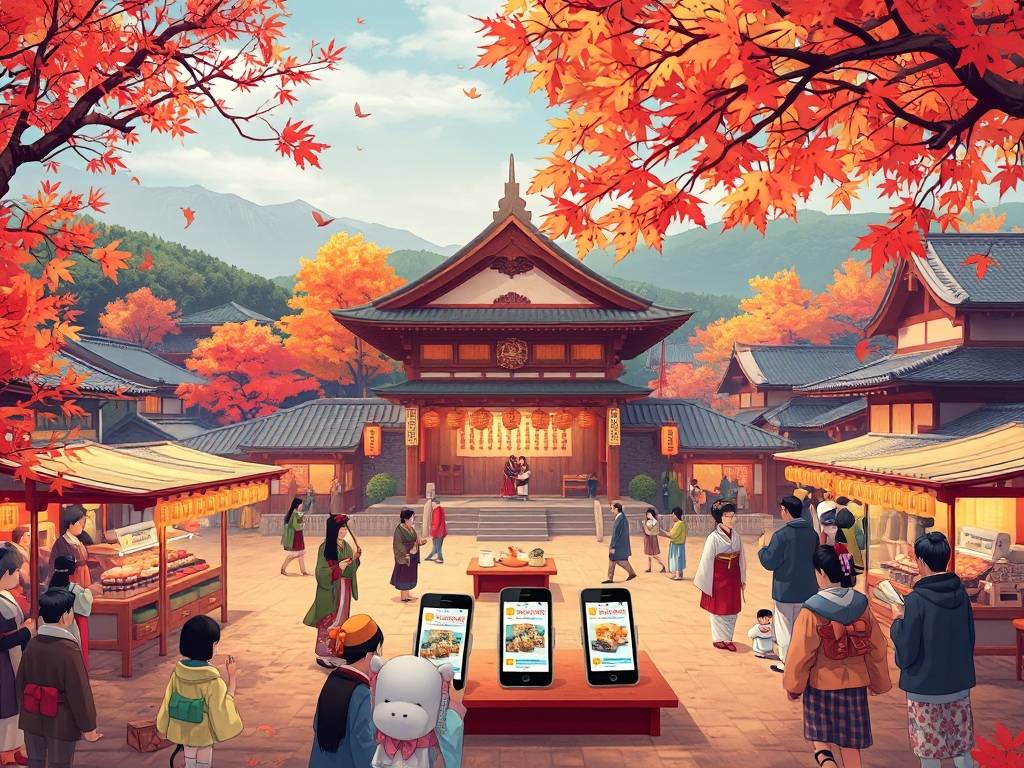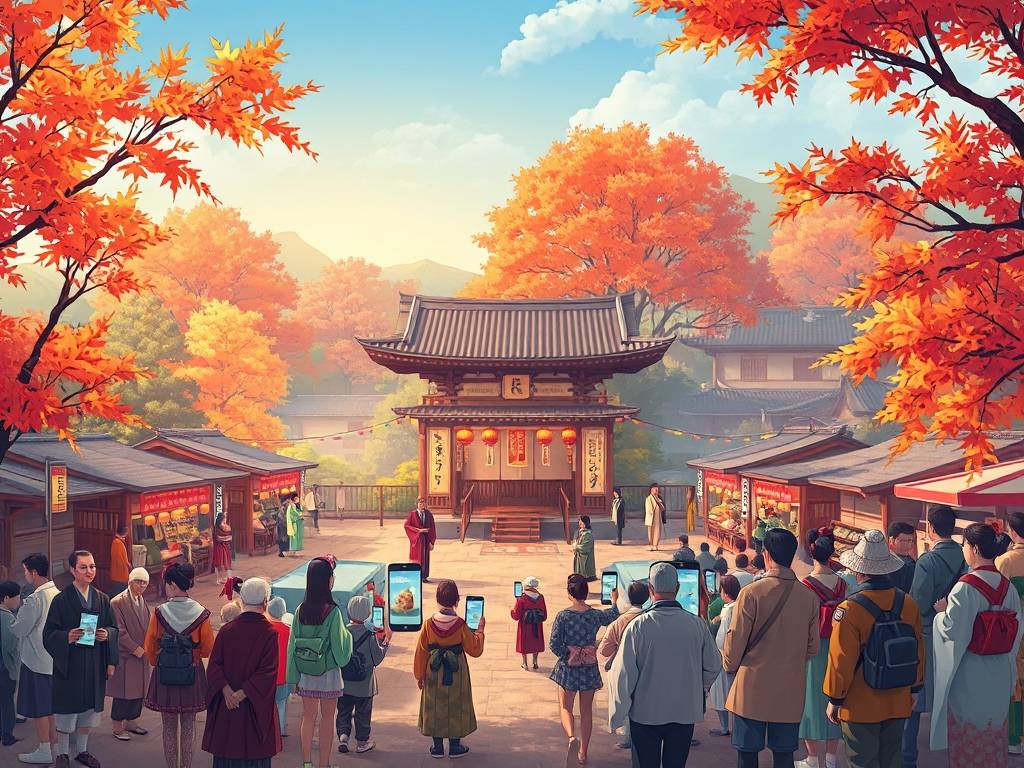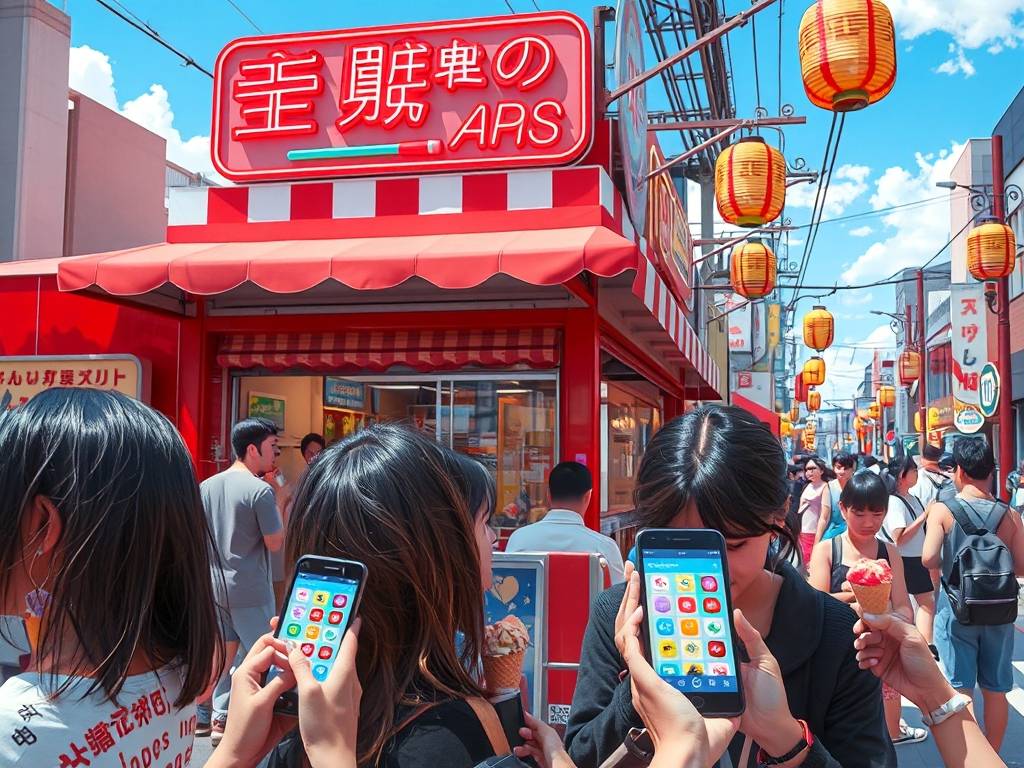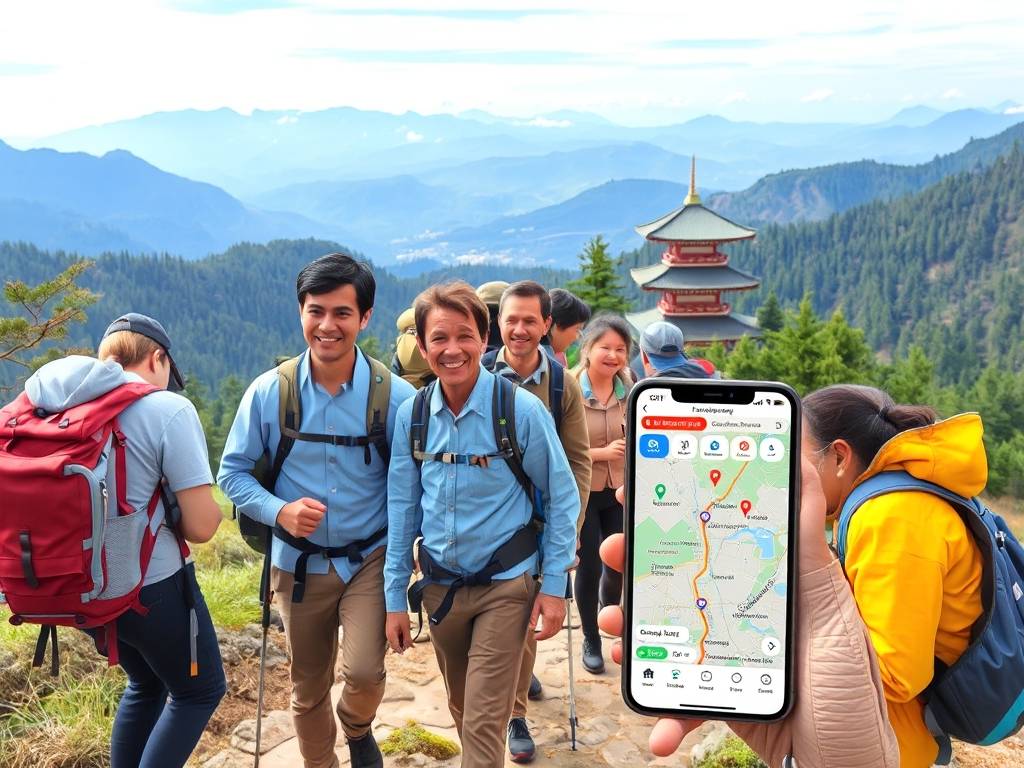Japan Travel
Japan’s Traditional Autumn Festival App Reviews: Read About Harvest Apps
Digital Harvest: Exploring Japan's Traditional Autumn Festivals Through Modern App Experiences
As the sweltering summer humidity gives way to the crisp, clear air of September and October, Japan undergoes a profound transformation. The leaves begin their fiery dance from green to brilliant crimson and gold, and the nation’s spirit turns towards gratitude, remembrance, and celebration. This is the season of aki matsuri—the traditional autumn festivals. For centuries, these events have been the heartbeat of rural and urban communities alike, honoring the year's harvest, ancestral spirits, and local Shinto deities. But in our interconnected digital age, a new tradition is emerging: experiencing and understanding these profound cultural moments through the screen of a smartphone.
The question for many modern travelers and culture enthusiasts is no longer just "Where should I go?" but "How can I deeply understand what I'm witnessing?" This is where a new generation of mobile applications comes in, acting as digital bridges to Japan's autumnal soul. Exploring these autumn festival apps is like having a knowledgeable local guide, a detailed history book, and a personal photographer, all tucked into your pocket.

So, what exactly can you expect from these digital companions? Let's harvest the key features and benefits.
A Digital Guide to the Season's Bounty
The most immediate use for a dedicated Japan festival app is practical planning. Autumn in Japan is a packed calendar of events, from the thunderous drumming of the Kyoto's Jidai Matsuri to the breathtaking floating lanterns of Nagasaki's Okunchi Festival. A robust app solves the primary problem of timing and location. With push notifications and customizable calendars, these apps ensure you never miss a major procession or a hidden local gem. They answer the crucial questions: What are the best harvest festival apps for travel planning? Look for ones that offer offline-accessible maps. GPS integration can guide you through crowded streets to the perfect vantage point for watching the massive floats of the Takayama Autumn Festival, a UNESCO Intangible Cultural Heritage event.
Beyond logistics, the true magic of these applications lies in their power of contextualization. Imagine you're at the Nikko Toshogu Shikinen Festival, watching a procession of a thousand warriors in samurai armor. Without context, it's a spectacular sight. With a good cultural immersion app for Japanese traditions, you can learn on the spot that this is a reenactment of the delivery of Tokugawa Ieyasu's deified spirit. This instant access to stories, symbols, and history transforms passive sightseeing into active cultural engagement. This is the core of enhancing your cultural experience with a festival guide app.
For foodies, the autumn harvest is a central theme, and apps have deliciously adapted. The Nikko Toshogu Shikinen Festival isn't just about warriors; it's about the scent of yaki-imo (roasted sweet potatoes) and the taste of fresh sake made from new rice. Specialized apps for Japanese food and harvest festivals often include features like photo-based food identification, explaining the significance of seasonal treats like kuri (chestnuts) and matsutake mushrooms. They can point you to the best street stalls at a festival and even provide simple recipes, allowing you to bring a taste of the harvest back to your own kitchen. This directly addresses the user's need for a comprehensive guide to Japanese autumn festival foods and their meanings.

Sowing Seeds of Knowledge: Educational and Interactive Elements
The learning potential extends far beyond the festival grounds. Many apps are designed not just for tourists but for anyone with a curiosity for Japanese culture. They often include beautifully illustrated sections on the history of harvest rites, the symbolism of the full moon during the Tsukimi (moon-viewing) festival, and the intricate craftsmanship behind the mikoshi (portable shrines) carried by enthusiastic locals.
Interactive features are what set the best apps apart. Imagine using augmented reality (AR) through your phone's camera to overlay a digital reconstruction of a historical festival onto a modern street scene. Or using a quiz feature to test your knowledge of the different kagura (sacred music and dance) performances. For families, these interactive features in Japanese cultural apps make learning about culture a fun, engaging game for children and adults alike. They solve the problem of making dense historical and religious information accessible and memorable.
Language barriers, a common concern for travelers, are also effectively dismantled. The top-tier autumn festival apps offer high-quality, built-in phrasebooks for festival-specific terms, audio pronunciations, and even real-time translation of signage or pamphlets via your camera. This empowers users to interact more confidently, whether they're ordering a snack or asking a local about their happi coat.
Reviewing the Digital Harvest: What to Look For in an App
With a growing field of options, how do you choose the right app? Reading authentic Japan festival app reviews is the first step. Look for reviews that mention specific festivals and detail the user experience beyond a simple star rating.
Here are the key criteria to consider, which form the basis of any solid review of Japanese tradition apps:
- Content Depth and Accuracy: Is the information provided by cultural experts or simply scraped from the web? An app filled with generic descriptions is less valuable than one with unique insights, local interviews, and verified historical data.
- User Interface and Design: The app should be as elegant and intuitive as the culture it represents. Cluttered, difficult-to-navigate apps can frustrate users, especially in a crowded, fast-paced festival environment.
- Offline Functionality: This is non-negotiable. You cannot rely on having a stable internet connection in the middle of a rural harvest festival or a packed city crowd. The ability to download maps, guides, and phrasebooks for offline use is a critical feature.
- Interactive and Unique Features: Does the app offer more than just text and pictures? Look for AR experiences, audio guides, customizable schedules, and integrated booking systems for nearby services.
- Cultural Sensitivity: A good app doesn’t just inform; it teaches respect. It should include sections on proper etiquette—how to behave at a shrine, whether photography is permitted during a sacred dance, and how to respectfully observe solemn moments.
By focusing on these aspects, you move beyond simply finding an app and start curating a personal digital toolkit for cultural discovery.
In conclusion, the emergence of apps dedicated to Japan's traditional autumn festivals is a beautiful synergy of the old and the new. They do not replace the visceral thrill of feeling the ground shake under a massive mikoshi or the simple joy of tasting warm amazake on a cool evening. Instead, they enrich these experiences. They provide the context that turns observation into understanding and a vacation into a journey of cultural connection. They are the modern answer to an ancient human need: to share stories, celebrate community, and give thanks for the harvest. So this autumn, as you plan your journey to the heart of Japan's most beautiful season, let a digital guide help you uncover the deep, resonant soul of its timeless festivals. By downloading a well-chosen app, you are not just planning a trip; you are preparing for a deeper, more meaningful encounter with the living traditions of Japan.
相关文章
- Japan’s Mountain Star Gazing Gear Reviews: Read About Telescope Tools
- Japan’s Traditional Tea Ceremony Gear Reviews: Read About Tea Tools
- Japan’s Summer Surf Gear Reviews: Read About Beach Equipment
- Kyoto’s Fall Foliage Gear Reviews: Read About Hiking Equipment
- Japan’s Budget Dining Gear Reviews: Read About Food Tools
- Tokyo’s Science Museum Gear Reviews: Read About Exhibit Tools
- Japan’s Island Family Beach Gear Reviews: Read About Kid Equipment
- Japan’s Winter New Year’s Gear Reviews: Read About Celebration Tools
- Kyoto’s Hidden Bar Gear Reviews: Read About Drink Tools
- Japan’s Road Trip Photography Gear Reviews: Read About Camera Equipment
发表评论
评论列表
- 这篇文章还没有收到评论,赶紧来抢沙发吧~


